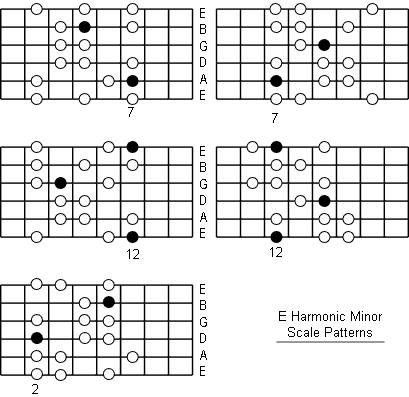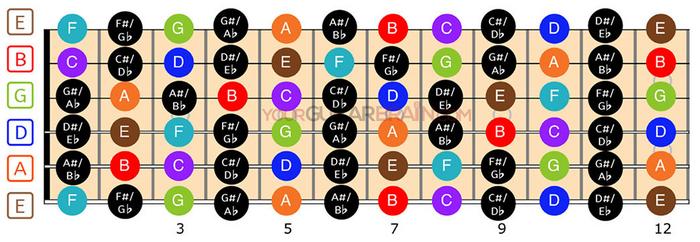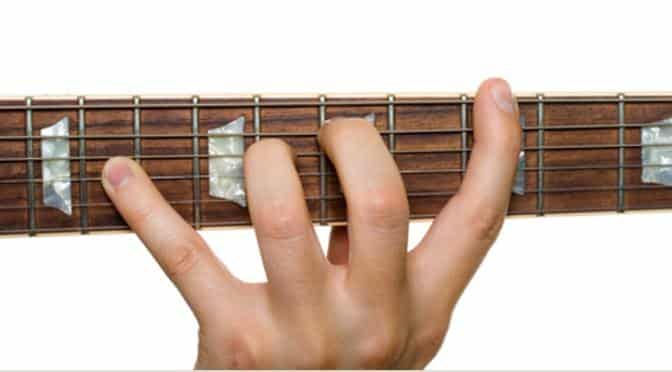Imagine the first time I held an E Harmonic Minor Scale in my hands on a guitar. The unfamiliar frets stared back, ready to unleash a soulful melody, yet intimidating. The climax of the story isn’t here, but later on, transforming countless guitarists’ musical journeys. I’m Robert Williams, your trusted guitar journalist and devotee of guitar scales. Through this guide, we’ll peel back the layers of the E Harmonic Minor Scale, a magical palette waiting to color your musical canvas.
3% of guitarists can nail the E Harmonic Minor Scale in their initial stages. Remarkable, isn’t it? But what’s even more enticing is the host of guitarists who’ve mastered this elusive scale, painting emotional soundscapes. Sound intriguing? Stick around!
Here’s an audacious claim: the E Harmonic Minor Scale can redefine your guitar playing. It may sound like hyperbole, but it’s not. While it holds true, the ‘how’ is an exciting exploration in the labyrinth of guitar scales.
In this comprehensive guide, we delve deep into the world of the E Harmonic Minor Scale, building a pathway to its mastery. We’ll stride through the nuances of understanding this scale, its comparison to the natural minor scale, and the versatile techniques to practice it. Strap your guitar and let’s unveil the soul of guitar – its scales.
Understanding the E Harmonic Minor Scale
Harmonic vs Natural Minor Scales

Drawing upon my extensive studies at the Conservatory, I’ve found the understanding of Natural versus Harmonic Minor scales to be integral in mastering the E Harmonic Minor Scale on the guitar. The nuances that set these two scales apart are key fundamentals.
The Natural Minor scale is composed of seven distinct pitches prior to the octave note. When dipping into the E Harmonic Minor Scale, a raised seventh is introduced, resulting in a signature ‘Eastern’ sound that makes it so enticing to guitarists. This is where our journey starts to diverge, contrasting yet co-existing beautifully.
When playing the Natural Minor Scale, the sequence is smooth, creating an ambience of melancholic and evocative music, widely used in rock and pop genres. On the other hand, the Harmonic Minor Scale, with its characteristic augmented second interval, creates an intriguing spicy flavor, offering a different personality to a piece of music.
In the context of the E Harmonic Minor Scale, this difference becomes pronounced as the raised seventh directly transforms the resonance. This intricacy confers it a flavor akin to flamenco or Middle Eastern music, broadening its appeal, and offering guitarists a richer palette to work with.
It’s through these deep explorations of the Harmonic and Natural Minor Scales that I’ve grown as a musician. Understanding their intricate differences not only enhanced my skills on the guitar, but also enriched my compositions, opening a world of endless musical possibilities.
Next, let’s dive deeper into the theoretical constructs and formulae underlying these scales, further enriching your understanding and mastery of the E Harmonic Minor Scale.
Scale Formula and Theory

As we continue to explore the intriguing world of the E Harmonic Minor Scale, let’s delve into Guitar Theory and the Scale Formula. The Scale formula for the Harmonic Minor Scale is: 1, 2, b3, 4, 5, b6, 7 — don’t fret if your knowledge of intervals is shaky; ‘b’ refers to a ‘flatted’ note, one half-step lower than the natural note.
This formula expresses the specific sequence of intervals that creates the distinctive, slightly exotic sound of the Harmonic Minor Scale. Understanding this formula is crucial as it underpins the construction of the scale itself.
I have spent countless hours studying and decoding these formulas, and I can tell you, there’s nothing like the gratifying moment of understanding how this Theory comes together to produce the beautiful sound of chords we strum on a guitar. Golden moments like those never get old, and they continually fuel my passion to explore this musical maze further.
Understanding the Scale formula and Theory, though seemingly complex, simplifies the maze, making it easier to understand the finger movements and patterns associated with playing the E Harmonic minor scale. It allows you to visualise the architecture of the scale as your fingers move along the fretboard. You’re not merely memorizing a sequence of notes but grasping the underlying logic that binds them — an indispensable tool for developing your musical repertoire and versatility.
Now that we’ve covered the scale formula and its theoretical underpinnings, let’s transpose this knowledge to the fretboard and see it in action.
The Key of E Minor

For those committed to mastering Minor Scales on Guitar, the key of E minor is a fundamental knowledge area. Personally, it’s been a cornerstone in my journey of writing and transcribing music pieces. Let me share how this component contributes to mastering the E Harmonic Minor Scale.
The E minor key is considered the relative minor of G major. Consequently, it shares the exact note structure as G major, but with E as the root note. Understanding this relative position offers critical insights into chord progressions, offering flexibility and depth when playing the E harmonic minor scale on the guitar. When you delve into the realm of E minor, you uncover an extraordinary range of expression, often used to evoke profound emotional experiences, from melancholic to reflective themes.
These intricacies of the E minor key are what intrigued me in the beginning. They’ve enhanced my ability to compose and make diverse and musically rich pieces that wouldn’t be attainable otherwise. Thus, mastering the key of E minor is a significant step in your journey towards understanding the E Harmonic Minor Scale on the guitar.
Next, we explore similar insight through fretboard diagrams and positions, another valuable learning resource in mastering the E Harmonic Minor Scale.
Fretboard Diagrams and Positions

Years of engraving and transcribing guitar music has given me a unique perspective on fretboard diagrams and positions. From Segovia Guitar Scales to Jazz improvisations, my myriad experiences have culminated in a deep appreciation for detailed guitar finger positions, especially when it comes to the E Harmonic Minor Positions. Allow me to let you in on a few secrets I’ve garnered from my personal journey as a guitarist.
Now, imagine starting a journey without a map. Daunting, isn’t it? The fretboard of a guitar is similar, with its intricate labyrinth of strings and frets. Yet, here’s the engaging hook. What if there was a roadmap to guide your fingers as they glide along the fretboards for the E Harmonic Minor Scale? I’ll let you in on a little secret—it’s called the fretboard diagram.
The Fretboard Diagram is a guitarist’s life-saver. Picture it as a bird’s eye view of your guitar neck, with each box representing a fret and dots demonstrating where to place your fingers. These diagrams utilize numbers to illustrate finger arrangements, thus forming the DNA of the guitar finger positions.
Now, using this secret roadmap to master the E Harmonic Minor Positions, you start by locating the root note—E. Keep in mind the scale form involves jumping position by one fret for the last two notes per octave. This is unique to the harmonic minor scale and is part of its charm. Here, focus on accuracy and slow speed. That forms the basis of an excellent foundation before escalating speed.
I’ve found that Segovia Guitar Scales, the brainchild of classical guitarist Andrés Segovia, are brilliant learning tools. They encompass seven critical positions for the major, melodic minor, harmonic minor, and chromatic scales. Tracing his formations, you will find patterns emerging for the minor scales which aid in memorizing positions, thus helping you gradually grasp finger placements, even for intricate scales like the E Harmonic Minor.
My years on the fretboard have taught me that there are no shortcuts here, but with segregated practice and patience, these scales would become second nature. You just need to dedicate time to rehearse each position, train your fingers, and overtime, the fretboard will feel less daunting, and those E Harmonic Minor Positions will seamlessly glide under your fingertips.
Beyond the complexities and the jargon, playing an instrument is, at its very heart, a form of expression. The scales, the fretboard diagrams, the finger positions— they are just tools to aid in voicing these expressions more proficiently. As we progress through this guide, we’ll delve deeper into the hows and the whys, making the E Harmonic Minor Scale a fluent language in your musical repertoire.
How to Practice the E Harmonic Minor Scale
Guitar Scale Practice Techniques

As we delve deeper into the ‘How to Practice the E Harmonic Minor Scale’ section, we’ll study my favorite guitar scale practice techniques specifically shaped for navigating through the E Harmonic Minor Scale. These techniques hold a significant place in my personal practice routine, honed over my years of exploring various musical landscapes.
Slow Practice is my go-to starting approach. With slow, deliberate movements, I strive for clear and even notes, holding each a tad longer than usual. Focusing on note clarity sharpens my understanding of the scale’s structure and pitches, essential when graduating to faster tempos.
Finger Exercises, where I practice the scale up and down the fretboard, boost my fretting hand’s agility and strength, indispensable for a smooth performance of the E Harmonic Minor Scale. Simultaneously, I focus on consistent picking to enhance my right-hand technique.
Another staple of my routine is Interval Training. Playing the scale in varied intervals, helps develop my ear and broadens the creative possibilities within the scale. Lastly, the Metronome Practice serves as a rhythm checkpoint. Starting slow and gradually increasing the tempo ensures my scales stay rhythmically accurate as my speed increases.
The practice techniques I’ve shared, underpin my mastery of the E Harmonic Minor Scale. Each helping refine different aspects of my playing, from building musical intelligence to hand coordination. They perfectly illustrate how a bit of strategy in guitar scale practice can become a powerful tool in mastering scales.
Stretching Exercises for Better Technique

Mastering the E Harmonic Minor Scale on the guitar is not just about knowing your music theory—it’s also about having the physical agility and stamina to execute each note with precision. A vital ingredient in building this ability is through incorporating finger stretching exercises in your practice regime. As a seasoned guitarist, I can attest to the contribution of these exercises in refining my technical prowess over the years.
Finger stretching exercises for guitar are essential to increase your reach, and improve the dexterity and flexibility of your fingers. The routine I follow involves extending each finger to its maximum limit, holding it for a few seconds, and then gently bringing it back to its resting position. I repeat this for each finger, and it helps me tremendously in playing the wide intervals that the E Harmonic Minor Scale occasionally demands without straining my fingers.
Remember, these exercises are not about how far you can stretch, but rather how consistently you do so. Don’t force a stretch, instead gradually increase the stretch over time. Consistency is key.
The link between finger stretching exercises and the execution of the E harmonic minor scale might not be immediately apparent, but trust me, the benefits will manifest. Over time, these exercises will not only improve your technique but also enable you to practice longer without fatigue, significantly enhancing your command over the E Harmonic Minor Scale.
As we continue our exploration of how to effectively practice this scale, keep in mind the importance of maintaining the health and agility of your fingers — an aspect often overlooked but integral to our mastery of the guitar.
Scale Exercises and Audio Examples

Nothing excites me more than creating and deconstructing exercises as they are the backbone of mastering any instrument, let alone the guitar. As we approach the land of ‘Scale Exercises and Audio Examples’, I am thrilled to share with you some challenging yet immensely rewarding guitar scale exercises.
Studying the fretboard and positions is essential, but the real magic dwells in the practice. To truly understand and play the E Harmonic Minor Scale, you need to feel it, quite literally, under your fingers. Incorporate exercises into your practice routine that allow you to invest time in each note, understand their contribution to the overall sound, and how they link to create beautiful melodies.
There’s something incredibly valuable and empowering about practicing along with audio examples. Being able to hear the scale played correctly provides a sense of tonal context that’s essential for any musician. It places the theoretical knowledge you have about the scale into a practical framework and enhances your ability to nail the nuance and fine-tune your technique.
While practicing, don’t rush or skip over mistakes. Embrace them as opportunities for learning. Playing slowly and deliberately not only strengthens your technique but also engrains the scale more deeply into your musical vocabulary.
Remember, mastering the E Harmonic Minor scale, as with any other scale or music piece, is a long-term commitment that requires a blend of consistency, patience, and courage. The process is as rewarding as the outcome itself. So, get your guitar ready, let’s dive into these scale exercises and audio examples. Happy practicing!
FAQs
What is the E harmonic minor scale for guitar?
How is the E harmonic minor scale played on a guitar?
What are some practice tips for the E harmonic minor scale?
Conclusion
Think the E Harmonic Minor Scale is just for dark, brooding music? Think again. Join me in exploring how it can bring a whole new dimension to your music. In my experience, adopting the Guitar Technique of the scale offers a wealth of opportunities to heighten your playing skills. From understanding the subtle distinctions between natural and harmonic scales, to masterfully traversing the fretboard through well-illustrated diagrams and positions, you’ll surely unlock an entirely new level of musical excellence.
Looking back, we’ve journeyed from the very basics of the E Harmonic Minor Scale, dissected its theory and formula and reviewed the key of E minor, all the way through creating a sound practice routine. Relevant exercises, including stretching for better technique, have been shared with an aim to augment your guitar prowess. Most importantly, given ample time and practice, you will start to see improvements in your overall musicality.
While the scale is indeed, intrinsically linked to a certain aura of melancholy, it’s so much more. It’s an instrument of versatility and beauty. Having shared my accumulated knowledge in this article, I hope you’ll join me in appreciating the beauty of the scale and bring that into your playing. Remember, the moment you pick up your guitar, you have the opportunity to create something beautiful. Here’s to you finding your unique sound!
